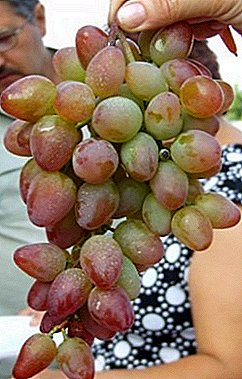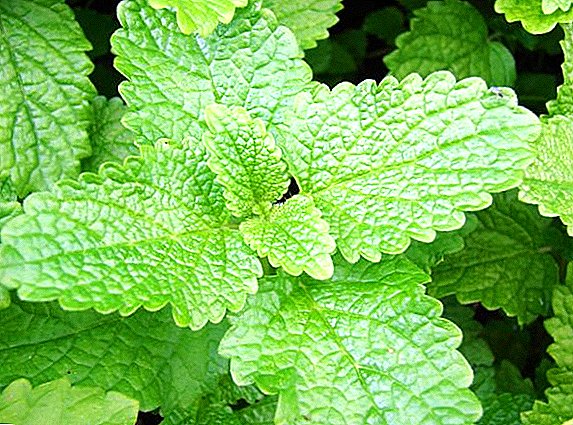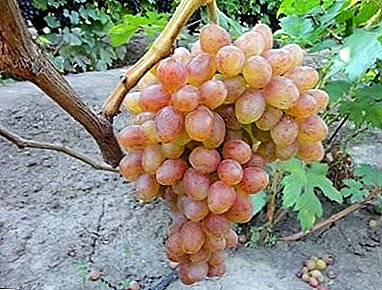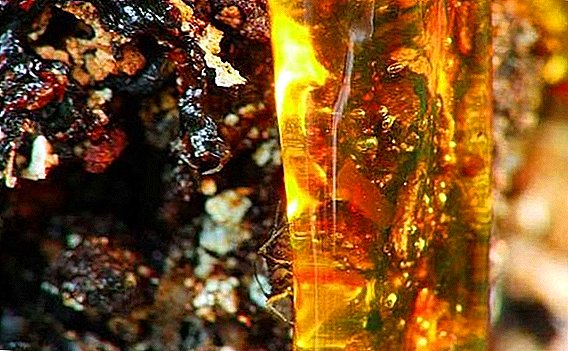 Under the conditions of a complex Siberian climate, over the centuries of natural selection, those plants that have managed to accumulate the necessary skills and properties for existence in the harsh lands survived. Against the background of the natural difficulties of growth of many representatives of the local flora, Siberian cedar looks like a gigantic, vibrant health and inner strength that it can share with a person. In addition to the well-known tasty nuts and reliable furniture wood, cedar is a source of so-called turpentine, which we will talk about.
Under the conditions of a complex Siberian climate, over the centuries of natural selection, those plants that have managed to accumulate the necessary skills and properties for existence in the harsh lands survived. Against the background of the natural difficulties of growth of many representatives of the local flora, Siberian cedar looks like a gigantic, vibrant health and inner strength that it can share with a person. In addition to the well-known tasty nuts and reliable furniture wood, cedar is a source of so-called turpentine, which we will talk about.
What is sap
Cedar resin in the people is called sap. This substance received this name for its medicinal properties, which have long been known to Siberians. Useful qualities of the resin due to the generation of negatively ionized oxygen during photosynthesis.  Natural resin appears on a tree trunk as a result of the sap flow inside it.
Natural resin appears on a tree trunk as a result of the sap flow inside it.
Did you know? Boiling the resin obtained from coniferous trees leads to the formation of rosin so familiar to radio engineers.Such a substance is useful for the plant to create its own natural barrier against pests and microbes that are not averse to eat or live at the expense of the internal resources of cedar or other coniferous trees in case of damage to its bark.
The conifers include such as pseudo-hemlock, araucaria, yew, common spruce, fir, blue spruce, cypress, larch, juniper.
Chemical composition
Turpentine has another name - turpentine. This sticky substance protects the bark of trees, thanks to the phytoncides contained in it, the essential oils and resinous inclusions. 
The composition of cedar resin includes such substances:
- Tar: acid resins, resins and other similar compounds with complex specialized names - up to 70%.
- Volatile: natural hydrocarbons of monoterpenes (pinene, limonene, camphen, phellandrene and others). Turpentine is produced from these substances and from 30 to 35% in cedar resin.
- Neutral: diterpenes and sesquiterpenes, which in various quantities are part of the resinous secretions of various conifers. The content of such compounds ranges from 5 to 10%.
- Rest: mainly higher fatty acids and their compounds in a small amount - 0.3%.
The resin from fir and pine only slightly differs from cedar in composition and properties.
Learn also about the healing properties of pine resin.Therefore, it can be used for medicinal purposes along with cedar resin.

Resin species
There are three types of this beneficial product, which depend on the methods of collection and processing:
- Uncleaned is collected by hand from tree trunks. This resin is natural and is closest to nature, but contains impurities in the form of wood fibers, all kinds of forest debris.
- Purified (reheated). Here everything is clear from the name - sap is melted and thus separated from all sorts of foreign inclusions. Collecting resin is quite a laborious process, and subsequent processing further increases the cost of obtaining the final product.
- Hitch. Poaching method for the extraction of raw materials, which killed many trees. In order to stimulate cedar gum formation, irrecoverable damage is applied - a part of the trunk cleared of the bark is incised and chemicals are applied to it, which cause accelerated gum formation on the injured places. Chemicals usually contain bleach or sulfuric acid, some of these "stimulants" get into the resin and destroy all its beneficial properties.
Important! When purchasing resin, it is necessary to know its origin exactly and trust the manufacturer and seller to avoid expensive and useless purchases.

Beneficial features
As well as it is necessary to medical preparations, the sap has a lot of useful qualities - after all not for nothing it has such "speaking" name.
Cedar resin has the following healing properties:
- antiulcer and normalizing for the gastrointestinal tract;
- antioxidant, detoxifying and normal metabolic processes;
- anti-sclerotic and supporting the activity of the cerebral cortex;
- wound healing.
Curcumae, celandine, woodruff, silverweed goose, princeling, stemship magenta, blackbird, canoper grass have wound healing properties.
It also restores the protective functions of existing cells and helps in the formation of new ones, and also removes fatigue, relieves depression.
Due to the linoleic acid present in the composition, the resin is a component of preparations that support and regenerate the skin. 
Medical applications
For a long time the resin was used in medicine. True, it was initially available only to royal persons, since it was possible to extract this resin only in small quantities.
The court physicians had the opportunity to study its properties and be convinced of the medicinal qualities of the substance on their titled patients.
As it turned out experimentally, cedar resin has a positive effect in the treatment of such diseases:
- skin (wounds, ulcers, large scratches);
- inflammatory, in their various manifestations;
- eye;
- diseases of the oral cavity (both dental and cavitary);
- joint and muscle pain;
- anemia and weakness after illness;
- diseases of the gastrointestinal tract (gastritis, ulcers of different origin, problems with the gallbladder);
- cardiovascular diseases (arrhythmia, angina, atherosclerosis, thrombosis);
- tumors of various types.

Did you know? During World War II, wounds of fighters were treated with resin balsam (turpentine balsam). This liquid helped fight even with gangrene.
Use in cosmetology
The effect of gum on the skin of a person has been studied extensively and is actively used in the treatment of dermatological diseases. The plant helps well in the fight against acne rashes, boils, lichen, dermatitis and diseases of fungal origin, as the skin and nails.
With the help of preparations of cedar resin, you can effectively cleanse the skin without the use of various cosmetic creams and scrubs. Turpentine has a calming and toning effect, removing swelling, burning and redness, and can also significantly rejuvenate the skin of the face.
Role in cooking
In the recipes of the resin do not find, except in the method of preparation of a specific honey, which we will discuss later.  But the addition of oil and extract from this substance in different dosage forms is quite common. Mostly used balm, made on the basis of cedar resin.
But the addition of oil and extract from this substance in different dosage forms is quite common. Mostly used balm, made on the basis of cedar resin.
Important! Resin preparations should not be given to children under the age of three. For older children, these drugs should be used with caution, watching their reaction to the drug.
Means can be added at preparation of seasonings, teas, mixtures, kvass, decoctions. In fact, there is no strict recipe for using this amazing product - for example, you can simply put a piece of resin in brewed tea.
Harvesting and storage of raw materials
Resin is better to collect in the cold season, when its viscous properties are lower due to the corresponding air temperature. Such a sap can be cut with a sharp knife, previously rubbed with an oiled cloth - this is done so that it does not stick to the blade.  Collection of gum After cutting the raw material is placed in a convenient container for transportation.
Collection of gum After cutting the raw material is placed in a convenient container for transportation.
It is more difficult to extract fresh sap, since for its emergence from a tree it is necessary to carry out some manipulations.
It is mined from spring to autumn in a young coniferous forest as follows:
- a young tree is selected;
- near the base of the thick branch, an incision is made through the bark about 5 cm long;
- the collection container is attached on the trunk at the place where the resin will stand out.
After filling to the required level, the container must be tightly closed - this will prevent solidification of the resulting liquid. You can also pour a small layer of vegetable oil on top of the mined raw material, which will protect it from drying out.  The storage conditions of the substance obtained are quite simple: a tightly closed container with it should be in a cool and dark place. Most of all, under these conditions, a refrigerator or a cellar that is not too damp is suitable.
The storage conditions of the substance obtained are quite simple: a tightly closed container with it should be in a cool and dark place. Most of all, under these conditions, a refrigerator or a cellar that is not too damp is suitable.
You can still be safe, using a dark transparent glass container for storage. Storage of gum in the freezer is not recommended., although it has no contraindications - the drug does not lose its properties, but it noticeably thickens and then requires a long period of time to thaw.
Separately, it is worth staying on cleaning the prepared resin. She portions (about 100 g) is placed in gauze bags and dipped in a pot of boiling water. When molten substances begin to appear in the water, you need to collect them with a spoon and put them in a bowl of cold water.
This is done until the sap stops appearing on the surface. The cleaned raw material rolls into sausages and is ready for use, both as a chewing gum and for more serious use.  Cooking cedar gum
Cooking cedar gum
How to make a balm, and how to take it
Turpentine is most often used as a balm, which is called turpentine. It contains only two ingredients. - sap and vegetable oil. Some manufacturers may add various additives, such as vitamin E, but the drug is based on only two substances.
Also, the medicine can be prepared independently, using recipes of traditional medicine, or by mixing the purchased ingredients to obtain turpentine.
Depending on the content of cedar resin in the balm (from 5 to 50%), its value increases significantly. But the beneficial properties of this do not come too far, and concentrated liquids must be diluted.
The best is a 10% solution of resin in vegetable oil. Accordingly, 100 grams of resin and a liter of vegetable oil are taken for it (preference is given to native cedar, and in its absence it is possible to use olive or linseed).  Turpentine balsam is prepared in this sequence: on a low heat (about 50 ° C) in a water bath, the sap completely dissolves in oil, after which the liquid is filtered (for example, through several layers of gauze) and poured into small dark-colored glass containers.
Turpentine balsam is prepared in this sequence: on a low heat (about 50 ° C) in a water bath, the sap completely dissolves in oil, after which the liquid is filtered (for example, through several layers of gauze) and poured into small dark-colored glass containers.
The shelf life of such a product depends on the processing of the oil in which the sap has dissolved - refined guarantees the safety of the product for a year, while the raw oil will keep the balm for only three months.
The use of the drug inside is possible only at a concentration of from 5 to 10%, starting with 1-2 drops per day. Preparations with a high content of resin after trial application to the skin - in the form of a test for individual intolerance - are used for rubbing into the skin. 
How to cook butter
To prepare cedar nut oil you need:
- To facilitate the cleaning of nuts, dip them for 15 minutes in hot water or fry.
- Thoroughly peel and sift to remove debris and impurities.
- Dry the raw materials in the oven or dryer for vegetables.
- To squeeze nuts in the domestic vegetable press at maximum power.
- Squeezed raw materials can be squeezed 1-2 more times.
- The resulting liquid defend, filtered and sterilized for about 10 minutes in a water bath.
Important! The oil yield from pine nuts is miserable - a teaspoon of oil is obtained from a glass of kernels.
Oil is used both in medicine and in cosmetology. In addition, cedar kernel oil is the best solvent resin.
Familiarize yourself with the beneficial properties of pine nuts and cedar oil.For skin diseases, arthritis and rheumatism, the liquid is applied to the affected area with a cotton swab.
 In general, various skin problems are the “profile” of cedar oil, the rubbing of which can help in the fight against freckles, acne, pigment spots, dandruff, hair loss, excessive susceptibility to solar radiation, the appearance of wrinkles.
In general, various skin problems are the “profile” of cedar oil, the rubbing of which can help in the fight against freckles, acne, pigment spots, dandruff, hair loss, excessive susceptibility to solar radiation, the appearance of wrinkles.Keep the resulting product, given its volatility, it is necessary in a tightly closed container away from direct lighting in a cool place.
Making honey
Cedar honey in the generally accepted understanding does not exist - from the pollen of cones of a plant a bee does not produce any product. Therefore, the concept of honey from cedar means a mixture of honey product with purified sap in approximately equal proportions.
Learn also about the beneficial properties of chernoklenovogo honey, hawthorn honey, boiled honey, sainfoin honey, honey honey, pine honey, chestnut honey, linden honey, rape honey.
This honey has excellent healing properties and can help in the prevention and treatment of viral and cardiovascular diseases.  In addition, the tool improves the immune system and metabolism of the body and has good antiseptic properties. Being applied with a bandage on an open wound, the honey from the turpentine will protect the injured site from infection and help the healing process as soon as possible.
In addition, the tool improves the immune system and metabolism of the body and has good antiseptic properties. Being applied with a bandage on an open wound, the honey from the turpentine will protect the injured site from infection and help the healing process as soon as possible.
The use of turpentine products for the skin, and especially for the scalp, was discussed above. So, the mask of such honey will relax and rejuvenate the face, as well as help relieve hair from dandruff.
Important! Using such a valuable composition, do not forget that bee products can cause a strong allergic reaction.
Cedar resin is a very useful product, and its use can not only improve human health, but also have a beneficial effect on its state of mind. Of course, this tool is not a panacea for any particular disease.
But to strengthen the immune system, improve metabolism and have a sedative effect is quite capable.
Feedback from network users














